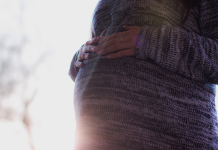“Are you sure?”
If the doctor and nurses asked me once, they asked me 20 times. “Yes,” I replied each and every time. I had never been so confident about a decision in my life. I knew I never wanted any more children. It was a simple, easy procedure with very little healing time, no physical scarring. Once it was complete, I’d also have a sense of relief – one less very big thing to worry about.

Fast forward 14 years, I met the man who would soon be my husband and his adorable 4-year-old daughter. When we talked about five-year plans, he had said he’d like to have more children, at least one. I remember laughing and telling him that was off the table. It never occurred to me that it could, in fact, be on the table.
One day, I saw that a good friend of mine was pregnant. I hadn’t seen her in years, but I knew she’d had her tubes tied. I messaged her to confirm that, and she’d told me she’d had a reversal. I couldn’t believe it. I had never even considered that as an option because I didn’t know it was possible. I immediately told my husband, and he encouraged me to research it. I encouraged him not to get his hopes up.
I discovered rather quickly that there were limited options available for tubal reversal.
Most OB/GYNs perform tubal ligations but are not equipped to reverse them. There are specialists, namely a select few in the United States, who perform reversal surgeries. As you’d expect with specialists, the procedures are very costly. It would cost at least $6,800 out of pocket and paid in full before anything could be scheduled. We were newly married and still trying to find our footing, so it didn’t seem feasible for us. I decided to look into the only other option I knew of, in vitro fertilization (IVF).
I’ll be honest, I immediately knew IVF was not going to be an option for us either. Aside from the financial cost, it felt invasive and sterile. Not to mention, the success rate for IVF was pretty bleak. We knew it could take a very long time if it worked at all. The emotional and physical toll seemed too much. Sure, insurance would cover most of it, but it just didn’t feel right. We discussed our two options and decided to go with the reversal. We’d have to start saving immediately because I was 37 years old. If we were going to give it the best shot naturally, we’d have to do it soon.
We chose Dr. Richard Levine in Louisville, Kentucky. I had heard good things about him, and he was fairly close. We set off on our adventure eight weeks later. Before surgery, his nurse gave me a push pin to add to the US map of his patients. There were hundreds, maybe thousands, of pins from every state! I added mine and went under the knife.
When I awoke, I was sick and in excruciating pain.
I had a six-inch incision and could barely move. The reversal was everything the ligation was not – painful, ugly, and fragile. The healing process would take at least six weeks – absolutely no sex, lifting, or strenuous activity. My insides were in fact as raw as they felt.
The next morning, Dr. Levine came to visit us at the hotel. The good news, my ligation was reversed. The bad news, there was some significant scarring on one of my tubes. He gave me a 50-60% chance of success but warned a tubal pregnancy was very possible. If I became pregnant, it was imperative to monitor it from the very beginning. He checked on me regularly via email and was always available if I needed him. He even talked to my OB about the procedure and how to handle it. It took four months to conceive. Dr. Levine had done what he does best.
Three years later, we have a beautiful toddler boy. A sweet soul, with a determined mind and wild heart. My tubal ligation had served me well, but the reversal served me well, too.

Stephanie Payne is the wife of an English teacher, biological mother of three beautiful children, and a stepmother to a bonus child. She owns S&C Diaper Service in Dayton, Ohio, and also wears the hats of photographer, artist, and bartender. She studied Philosophy and Religious Studies at Sinclair Community College before earning her BA in Humanities from Antioch University Midwest, in 2015.













